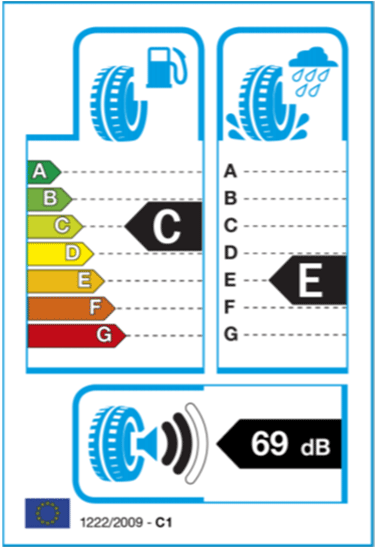At BK Tyres, we’re all in favour of customers having all the key information they need to make informed buying choices. A quick glance through our extensive stock shows that we prominently display all the tyre label information next to the individual products.
However, a little while back, the EU looked at the current tyre labelling system and decided that it needs to be improved. In their view, most motorists weren’t aware of the substantial differences between products.
Take, for example, the key categories of efficiency and wet grip. Tyre Safe reported research by the European Tyre and Rubber Manufacturers’ Association and Lizeo Group, which showed that only 1% of tyres in the market are ‘A’ rated for both. According to the EU, the existing system didn’t do a good enough job of helping consumers find these top-rated tyres (or lower performing ones for that matter).
Stuart Jackson, the Chair of Tyre Safe, summed it up like this:
“The key point of tyre labelling is to help those choosing a tyre to make an informed decision. There is concern that owners typically only consider cost and don’t appreciate there may be tyres that are more suitable and offer better value but perhaps at a higher price. It’s in the interest of vehicle owners to make themselves aware of the information contained on the new tyre label to cut costs in fuel, as well as improve their safety.”
To add to those comments, it’s true that for many consumers at the moment, a tyre is a tyre is a tyre. The drivers most likely to take an interest in how their tyres perform are those who have higher performance cars or enjoy more spirited driving. However, this may change for three main reasons:
- Choice of tyres can affect range of electric vehicles, sales of which are rocketing across the UK and EU.
- Electric vehicle drivers may look for quieter tyres, as tyre noise becomes more intrusive when there’s no internal combustion engine to mask it.
- Petrol and diesel vehicle drivers may look for tyres with better energy characteristics as fuel prices inevitably rise.
One problem with the existing labels are their confusing rating system. We’re all familiar with an A – E banding system for energy consumption. It’s on everything from TVs to washing machines. However, tyres use an A – G system. We’re so used to seeing ‘E’ as the lowest-performing category that it takes some mental readjustment to realise that, when it comes to tyres, there are another two bands below this. Or to put it another way, a C rating for an electrical appliance is firmly in the middle of the league table. For tyres, the equivalent is a D.
A second problem is that labelling information hasn’t always been easily available to either retailers or customers. For example, if you visit a garage for your tyre fitting (though, why would you when you can have your tyres fitted at home?), the tyres go straight from the stock room to your vehicle without ever catching sight of the label. This is where online ordering scores, as you can see exactly what you’re buying.
Hang on a second, what about Brexit?
Sharp-eyed UK readers might well be wondering what this has to do with them. After all, we did leave the EU.
True, but it seems as though the DfT think it’s a sensible idea, so we will be adopting the same standards. As Tyre Press reports:
The UK government Department for Transport (DfT) has welcomed the tyre industry’s approach to the implementation of the new tyre labelling regulations since the solution allows the continued flow of labelling information to consumers despite initial regulatory differences between Great Britain and Northern Ireland.
Having covered the reasons for the changes, next time we’ll take a look at what form they will take. Stay tuned!
The BK Tyres blog carries news, views and information on tyres and related subjects. BK Tyres supplies and fits tyres throughout South Oxfordshire, including the communities of Abingdon, Didcot and Henley on Thames. As an independent, family run mobile provider, we provide exceptional levels of service and affordable prices. Contact us today.

